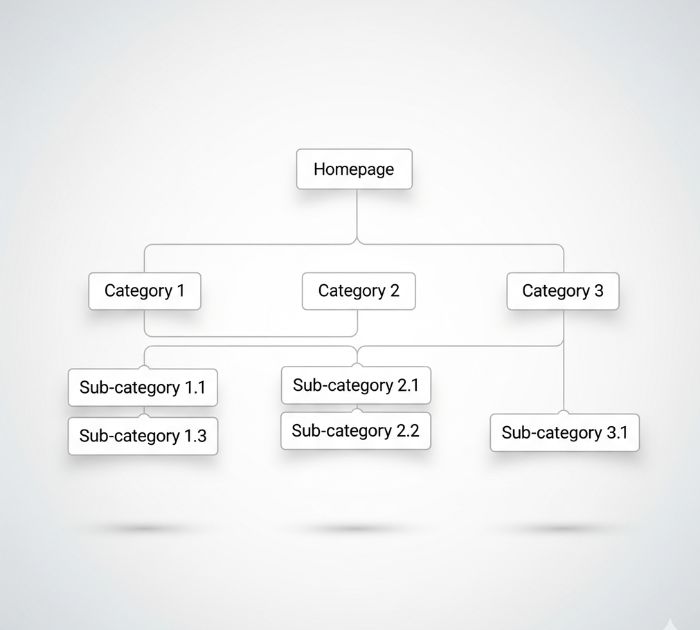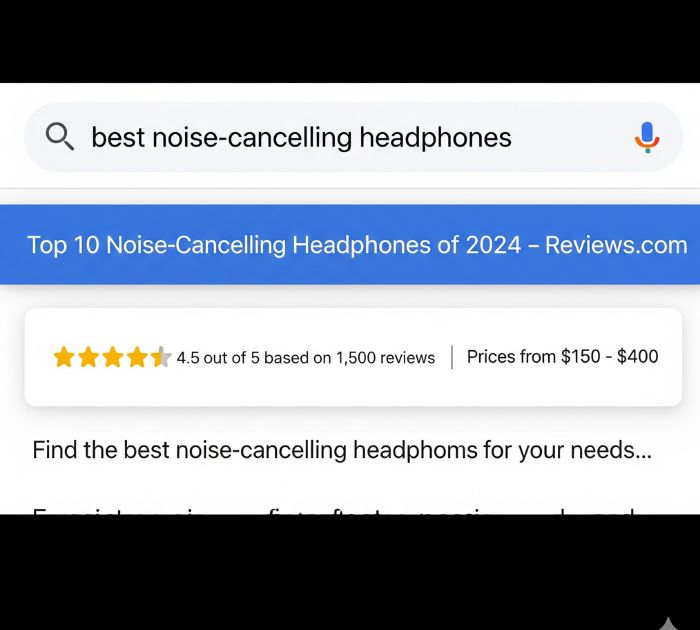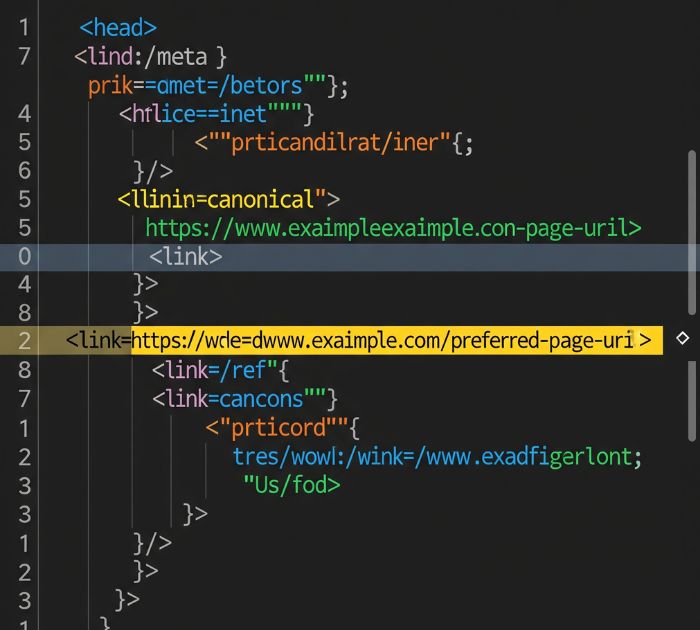So, what’s the big deal? Why is a technical SEO audit so critical? It all comes down to how search engines work.
They use automated programs called “crawlers” or “spiders” to discover and understand your content.
If these crawlers run into roadblocks, they might give up, leaving large parts of your site unindexed and unseen by potential customers.
According to a study by SEMrush, 50% of websites have crawlability issues, and 45% have broken internal links.
These are silent killers of online performance.
In a mobile-first market like the UAE, where over 98% of the population accesses the internet via smartphones (as per the Telecommunications and Digital Government Regulatory Authority – TDRA), issues like slow page speed or a poor mobile experience can be devastating.
A thorough technical website audit helps you:
- Improve Search Rankings: Fixing technical errors makes it easier for Google to reward your great content with higher rankings.
- Enhance User Experience (UX): A technically sound site is often a faster, more reliable site for users, which reduces bounce rates and increases conversions.
- Maximize ROI on Content: Ensure that every dirham you spend on creating amazing content actually gets seen by your target audience.
- Stay Ahead of Competitors: Many businesses in the region still neglect the technical side of SEO. A clean bill of health gives you a significant competitive advantage.
My Experience: I worked with a prominent e-commerce brand in Dubai that was investing heavily in content and social media but saw stagnant organic traffic.
Our technical SEO audit uncovered a major issue: a misconfigured robots.txt file was blocking Google from crawling their most important product category pages.
It was like having a beautiful storefront with the doors locked. Within a month of fixing that single line of code, their organic traffic to those categories jumped by over 60%. It was a stark reminder that technical SEO is the foundation for everything else.
Your Step-by-Step Guide to a Technical SEO Audit
Ready to look under the hood? A comprehensive technical SEO audit can seem daunting, but you can break it down into manageable steps.
Here’s a checklist covering the most critical areas.
1. Crawlability and Indexability: Can Search Engines Find and List Your Pages?
This is the absolute starting point. If your pages can’t be found or indexed, nothing else matters.
- Check robots.txt: This file tells search engines which pages they can and cannot crawl. A small mistake here can de-index your entire site. Make sure it’s not unintentionally blocking important content.
- Review Your XML Sitemap: Your sitemap is a roadmap for search engines. Ensure it’s automatically updated, free of errors, and submitted to Google Search Console. It should only contain URLs you want to be indexed (status code 200).
- Analyze Google Search Console’s Coverage Report: This is your best friend for a technical SEO analysis. It tells you exactly which pages are indexed, which have warnings, and which are excluded and why. Look for “Crawled – currently not indexed” or “Discovered – currently not indexed” errors.
- Look for “Orphan Pages”: These are pages on your site that have no internal links pointing to them, making them nearly impossible for both users and crawlers to find. Tools like Ahrefs or Screaming Frog are excellent for discovering these.

2. Site Speed and Core Web Vitals: Are You Fast Enough for UAE Users? ⚡
Page speed is a confirmed ranking factor, especially for mobile searches. Google’s Core Web Vitals are specific metrics that measure user experience, and they are critical.
- Largest Contentful Paint (LCP): How long does it take for the main content of your page to load? Aim for under 2.5 seconds.
- First Input Delay (FID): How long does it take for your page to become interactive? Aim for under 100 milliseconds.
- Cumulative Layout Shift (CLS): Does your page layout jump around as it loads? Aim for a score below 0.1.
You can check these metrics using Google PageSpeed Insights. The tool provides a score and actionable recommendations, such as compressing images, leveraging browser caching, and reducing server response times.
For the UAE market, using a Content Delivery Network (CDN) with servers in or near the region can dramatically improve loading times.
3. Mobile-Friendliness: Is Your Site Built for the Pocket? 📱
As mentioned, the UAE is a mobile-first nation. Google uses mobile-first indexing, meaning it primarily looks at the mobile version of your website for ranking and indexing.
- Run Google’s Mobile-Friendly Test: This is a simple pass-or-fail test.
- Check for Usability Issues: Ensure buttons are not too small, text is readable without zooming, and there are no intrusive pop-ups that hinder the mobile experience.
4. On-Page Technical Elements: Are Your Signals Clear?
These are the technical elements that exist on your actual pages.
- Title Tags and Meta Descriptions: Check for missing, duplicate, or truncated titles and descriptions. While meta descriptions aren’t a direct ranking factor, a compelling one improves click-through rates.
- Header Tags (H1, H2, etc.): Ensure your pages have a logical structure with a single H1 tag and subsequent H2s and H3s for subheadings.
- Structured Data (Schema Markup): This is code that helps search engines understand your content’s context. For an e-commerce site, you can use it for product ratings and prices. For a local business, you can use it for your address and opening hours. This can lead to “rich snippets” in search results, making your listing stand out. Moz has a great guide on understanding Schema.

5. Site Architecture and Internal Linking: Is Your Site Easy to Navigate?
A good site structure helps distribute “link equity” (ranking power) throughout your site and makes it easier for users to find what they need.
- Logical Hierarchy: Your site should be easy to navigate, ideally with important pages no more than three clicks from the homepage.
- Check for Broken Links (404 Errors): Broken internal and external links create a poor user experience and waste crawl budget. Use a tool to find and fix them.
- Review Redirects: Ensure you are using permanent (301) redirects for moved or deleted pages to pass link equity, not temporary (302) ones. Avoid long redirect chains.
6. Duplicate Content and Canonicalization
Duplicate content can confuse search engines and dilute your ranking potential. This often happens unintentionally with e-commerce sites (e.g., URL parameters for sorting).
- Use a Plagiarism Checker: For content issues.
- Implement Canonical Tags: The rel=”canonical” tag tells Google which version of a URL is the master version that you want to be indexed. This is the standard solution for duplicate content issues.

Conclusion: Turn Your Audit into Action
Completing a technical SEO audit is a huge step, but the report itself doesn’t fix anything. The real value comes from turning those insights into an actionable roadmap.
Prioritize your fixes based on impact and effort. A critical crawl error in your robots.txt file is a much higher priority than a few missing meta descriptions. Start with the big wins that will give you the most significant boost.
Your Next Steps:
- Choose Your Tools: Start with free tools like Google Search Console and PageSpeed Insights. For a deeper dive, consider investing in a paid tool like Screaming Frog, Ahrefs, or SEMrush.
- Run Your First Crawl: Follow the checklist above to identify key issues.
- Create a Prioritized Action Plan: List every issue, the proposed solution, the effort required, and the potential impact on your SEO performance.
- Implement and Monitor: Start fixing the issues, beginning with the highest priority items. Keep a close eye on your Google Search Console reports and organic traffic to measure the impact of your changes.
A technical SEO audit should not be a one-time event.
Schedule a regular check-up for your website with Vertex Media at least once or twice a year to catch new issues as they arise and to stay aligned with Google’s ever-evolving algorithm.
By keeping your website’s technical foundation strong, you’re setting your business up for long-term success in the competitive UAE market.

